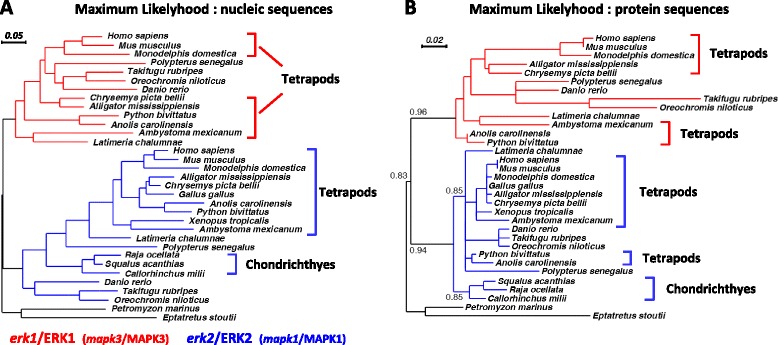Fig. 2.

Evolution of vertebrate ERK sequences. a Maximium-likelihood phylogenetic analysis of erk nucleotide and (b) derived ERK amino-acid sequences, at key nodes of vertebrate evolution. erk1/ERK1 and erk2/ERK2 phylogenies are indicated by red and blue branches respectively. Key taxonomic clades for this manuscript (tetrapods and Chondrichthyes) are indicated by brackets. Accession numbers and common names are listed in Additional file 7. Branch length is indicative of degree of sequence divergences. The order of species in the derived trees is noted to vary slightly between different topological methods and whether it is calculated using protein or nucleotide sequences. Given that all vertebrate ERK sequences are highly conserved, minor variations in tree placement can be expected
